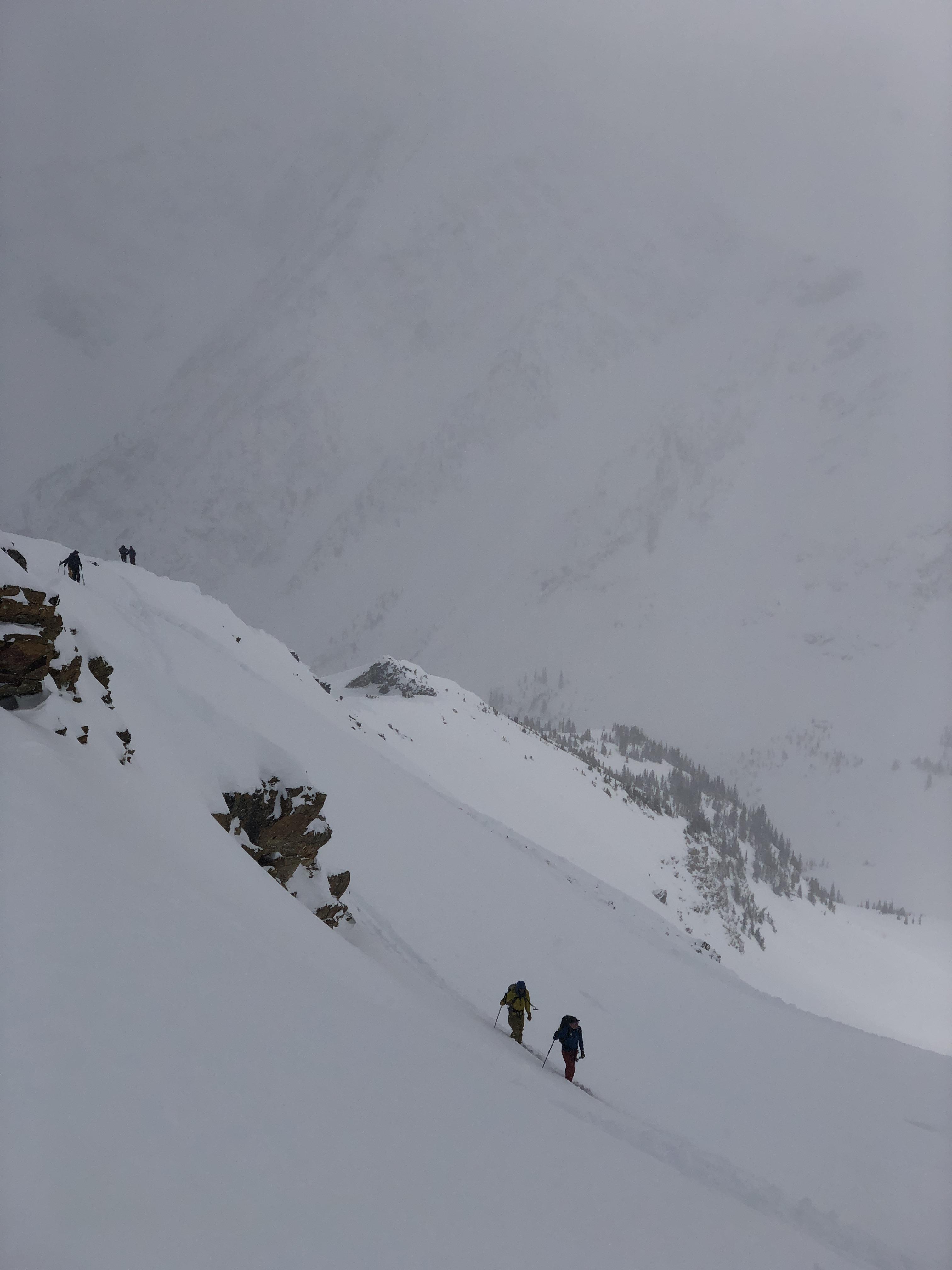Today (Monday February 27th) there was a skier accidental size 2.5 (on the bigger side of 2.5.) on Bruins Ridge. The 12th skier who crossed the slope that links the ridge into 8812 Bowl triggered the avalanche and fortunately was able to self arrest when the slab fractured at his feet on the bottom side of the skin track.
There were several groups in the area; a recreational party had put the track in to Bruins Pass, then my guided party crossed the slope and finally a third group started to cross the feature when the avalanche happened.
The previous 11 people who travelled on the skin track exercised good backcountry travel techniques by spacing out and crossing the slope one at a time. The unlucky number twelve skier apparently affected the weak layer more than everyone else and triggered the avalanche.
There were no obvious signs of instability on this windward slope and pole probing revealed no significant steps in resistance. This feature has literally been crossed more than 1000 times this season.
This feature has avalanched twice before this season and this avalanche failed just above the ground on facets. The crown was roughly 100m wide and ranged from 45cm to 1.3m. The avalanche ran approximately 800m into the flats of 8812 Bowl.
One thing that should be mentioned about the photo above is backcountry etiquette.
The first individual in the photo, the one closest to the top, chose to space out and travel one at a time across the slope after their partner had triggered the avalanche. The individual behind them, followed them closely across the slope, disregarding their wish to travel in a conservative manner.
Please be a good neighbour out there folks. If a group chooses to space out or ski a slope one at a time, please respect their wishes and don’t crowd them.

